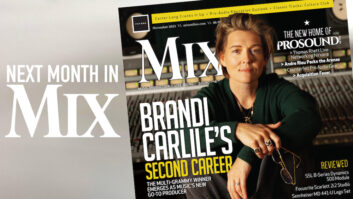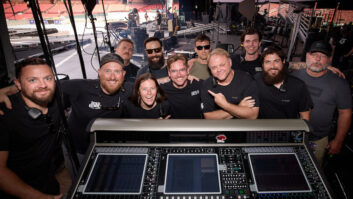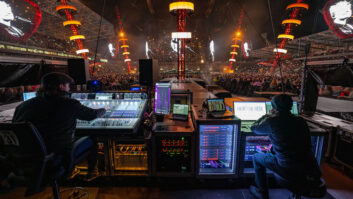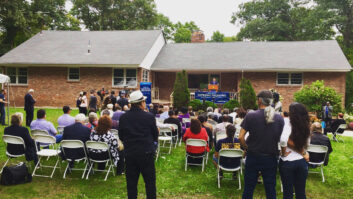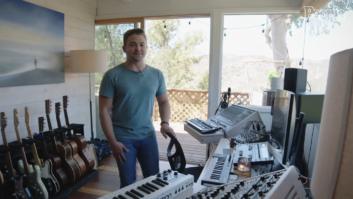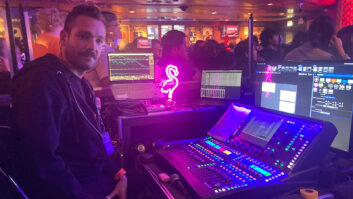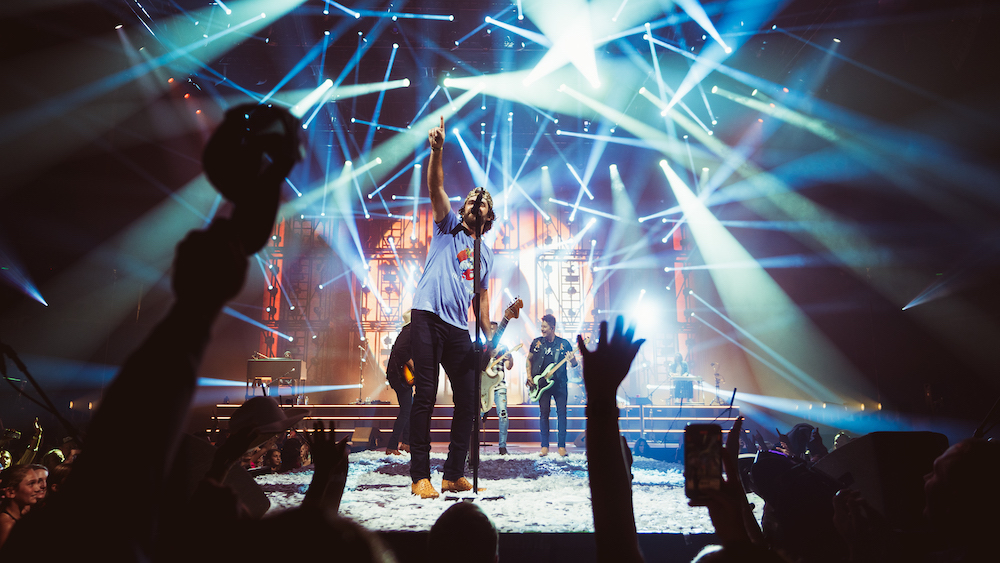
In the decade since Thomas Rhett released his first single, the country star has amassed 21 hits on the Billboard country charts, racked up 12 billion streams, taken home eight ACM awards including Entertainer of the Year, and knocked the socks off millions of fans in concert.
This past summer saw that tradition continue with the Home Team Tour 23, which brought Rhett’s good-time vibe to 40 packed arenas between early May and late September. Along for the ride was his own team of production pros that kept shows running like clockwork, using gear provided by Nashville’s Spectrum Sound.
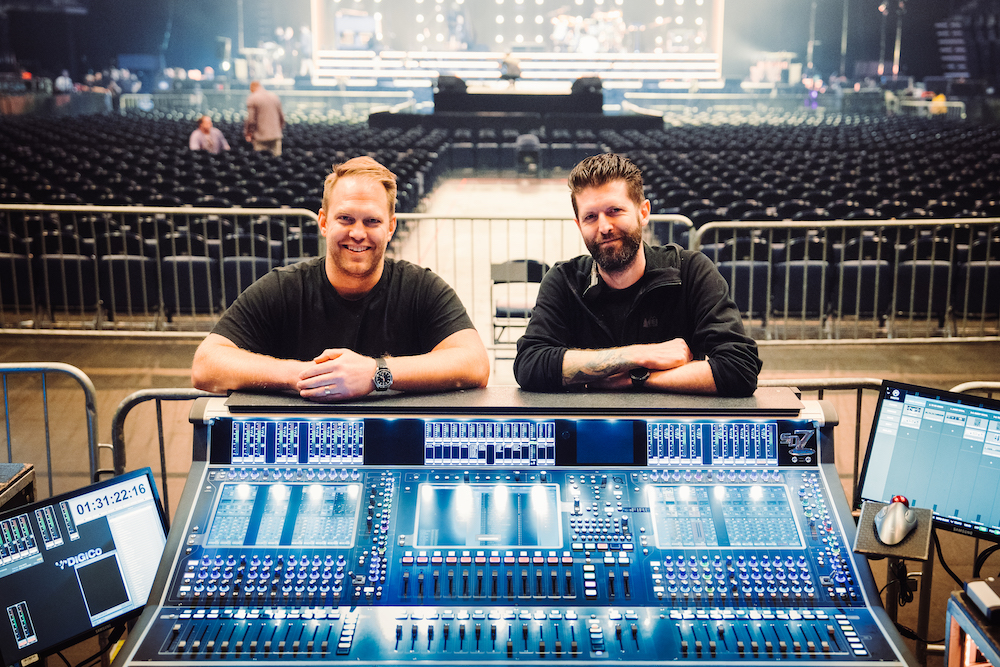
“We tour every year, so we’re able to have the same crew,” said front-of-house engineer Trey Smith, who came aboard in 2018. Monitor engineer Jimmy Nicholson joined the following year, and since then, they and the rest of the team have found new ways to continually improve the production. Said Smith, “We’re incorporating the backline package in a way that is pretty unique to any act out there—not just in country music, but I would say in most touring apparatuses.”
That unique project is a complex yet user-friendly network that ties together multiple backline workstations and audio worlds—FOH; Monitorworld; the Mothership (stage-right guitarworld); Miniship (bass, lap steel and so on); a triggers world containing all the drum electronics; and Keysworld, which handles keyboards, programming, teleprompter duties and more.
Getting all those worlds on the same page—much less the same network—was a discussion that began in 2019. The areas were each using analog, digital and MIDI gear of different vintages, but that led to technical difficulties and complicated workarounds, so Nicholson, Brad Lake (keys/teleprompter tech), Michael Rhodes (guitar tech) and Scott Dugan (Ableton) shepherded a new system into existence.
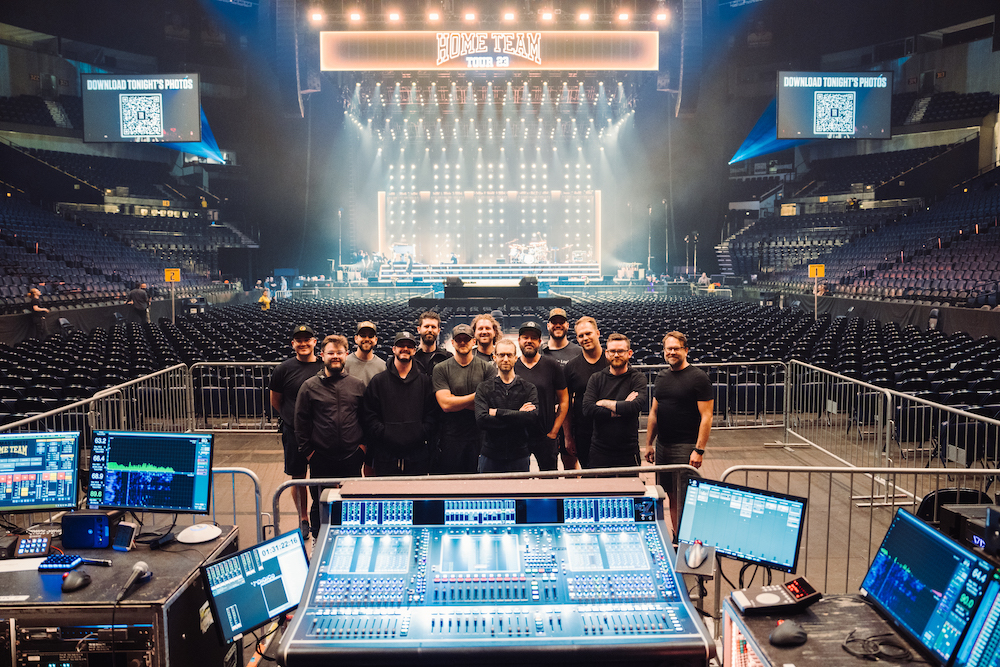
“We had the opportunity to make changes going into 2020,” said Nicholson. “We moved everything to digital as much as we could, which cleaned things up and helped with the consistency. Going into 2022, Brad Lake and I rebuilt the keys rig from the ground up, moved the A/D converters onstage, ran MADI over fiber from the keys position to Keysworld to get it digital as quick as possible, changed all the networking out, and made it much cleaner and more reliable.”
The revamped Keysworld was a major step forward for the production, so with the support of management, the new rig became a template of sorts for updating the other worlds. Smith noted, “Kevin Twist, our production manager, made a point of saying, if we’re going to do this, let’s do it 100% right with the newest technology out there so we can make something that is going to last as long as possible.”
All the worlds are now on a 10-gigabit network in a star configuration with redundant quad-core fiber connections between every rack, all done using Rapid Spanning Tree Protocol. “We are using that converged network to transport a wide variety of different protocols: RTP-MIDI, Dante, IP cameras and HDMI, KVM and USB over IP,” said Nicholson. “We have control of RF, Shure Wireless Workbench—we have units in various racks and then centralized control of those units from Monitorworld.”
Luke Combs is Gettin’ Global on His World Tour
Every day, the production gets a hardline from the venue and ties into the system’s router, which in turn provides internet access to all the computers on the system. A Synology NAS server is used as a file backup system that truly shines during rehearsals and soundchecks, said Nicholson: “People are updating files—the keys’ mainstage sessions, the drums’ Ableton triggers sessions, their Line 6 Helix guitar amp modelers. Those guys have the edits up on their computers, they’re updating those patches, saving them, and the computers automatically backup to the Synology server.”
The server updates to a Backblaze cloud backup, and the latest addition is an offsite Synology server that mirrors the one on the road, so if someone needs to access files while the tour’s server is in a truck enroute to the next gig, they can log into the offsite one and download what they need.
Tying it all together is what Nicholson suspects is “the largest deployment of iConnectivity RTPMIDI devices anywhere. We have the mioXM and mioXL, depending on how many analog MIDI ports we need to connect to them. Some of them are redundant—like in the Mothership and Miniship racks, there is an ‘A’ Helix and a ‘B’ Helix for each player as a redundancy, so the RTP-MIDI mios that drive them are also redundant in case that’s the system that has failed.”
How does this tie into the mix positions? Nicholson explained, “We have iConnectivity boxes connected to my DiGiCo Quantum7 console and Trey’s Quantum7. I personally have around about 50 macros programmed on mine that are just for the backline department to control things on my console. Trey has small subset of them because there are only a few things that he needs.”
Yes, backline pros have remote access to the consoles. Guitar tech Rhodes and Nicholson developed a system that was later adapted to the other worlds, based around a TouchOSC custom touchscreen interface that lets crewmembers use iPads to switch between A and B wireless receivers as well as guitar patches, and also have control of the monitor console, which is set up to give backline techs monitor and talkback mixes separately. The talkback mix remains in their IEM feed at all times, but they are able to switch out the music monitor mix for other things with the press of a button on an iPad.
“For instance, they’re able to change it out, soloing their guitar tuner, the Dante from the Axient Digital receiver or their player’s amp modeler,” said Nicholson. “They can do this throughout the show, and it’s completely autonomous—turn their talkback mic on to their guy, off again, back to crew-only, things like that. They don’t have to make any requests to me during the show.”
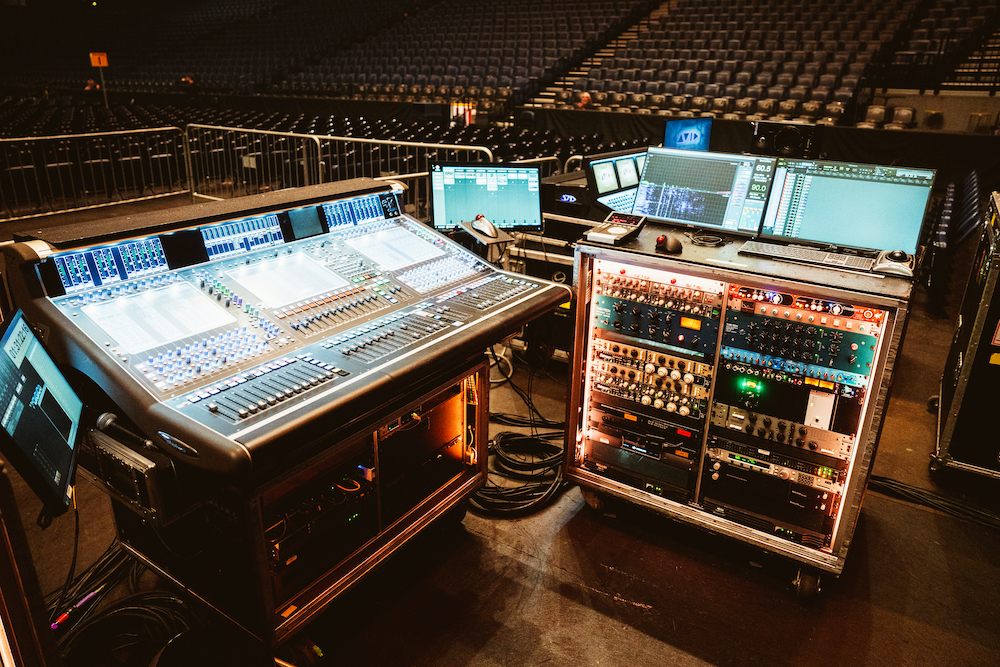
Of course, the engineers remain firmly in control of the mixes on their Quantum7s. For the Home Team Tour 23, Smith made use of Mustard and particularly Spice Rack processing (“I use it on almost every input”), but he also had extensive outboard racks filled with Empirical Labs EL8 Distressors, Bricasti M7s, Tube-Tech compressors, a Sonic Farm Creamliner III, a variety of Overstayer units and more. “I have certain core elements routed through analog, like TR’s vocal chain, kick and snare, several groups and the 2-Mix, all running through various outboard pieces to provide some saturation, warmth and color,” he said. “I think the texture and depth that analog provides is still worth it and pretty unique.”
Up onstage, the in-ear monitor systems of choice were Shure PSM1000s with JH Audio Roxannes, with the exception of Rhett, who had a pre-release version of JH Audio’s new Pearl IEM processor paired with a set of Ruby earpieces. It was a quiet stage, too, since the only live mics were vocals— with backgrounds on Shure SM58s and Rhett on an Axient Digital wireless with a KSM11 capsule—and drums. The main kit was surrounded by Sennheiser e904s, Beyerdynamic 201s, Telefunken M82s, Shure KSM313s and Mojave MA201-fets, but Rhett himself slid behind his own set of skins during the show—a kit captured with more e904s plus Shure Beta181/Cs and a Beta91A in the kick. Out on the thrust, Beyerdynamic’s discontinued Classis RM 30 B lectern mics were used as audience mics, capturing broad swaths of the crowd.
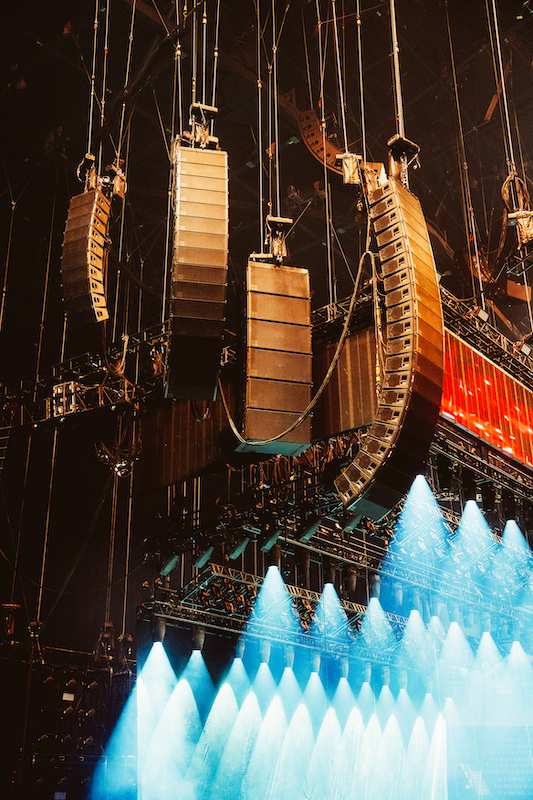
All that audio gear was provided by Spectrum Sound—as was the massive d&b audiotechnik KSL system hanging overhead; system engineer Jeremy Bayne used a DirectOut Prodigy unit as the processor for the PA. There were 20 KSL on the mains and 16 on the sides, joined by 10 Vs per side for the 270-degree hang. A half-dozen SL-Subs each side were hung between the mains and the sides, joined by 13 KSL-Subs on the ground and a series of Y10Ps for front-fills. “For TR’s music, I love the voicing of the KSL; it’s amazing and exactly what I need for the show,” said Smith.
The result of all that was a concert that left everyone in the arena—artists and audience alike—happily exhausted at the end of the night. “TR is very focused on making the music and the show as strong as possible,” said Smith. “He wants it to be something special, consistent and flawless. Our band are all great players, and with the ability that we have with these consoles and the technology that has been incorporated, it allows Jimmy and I to support them so they can flourish with their performance. That’s really what this is all about.”

